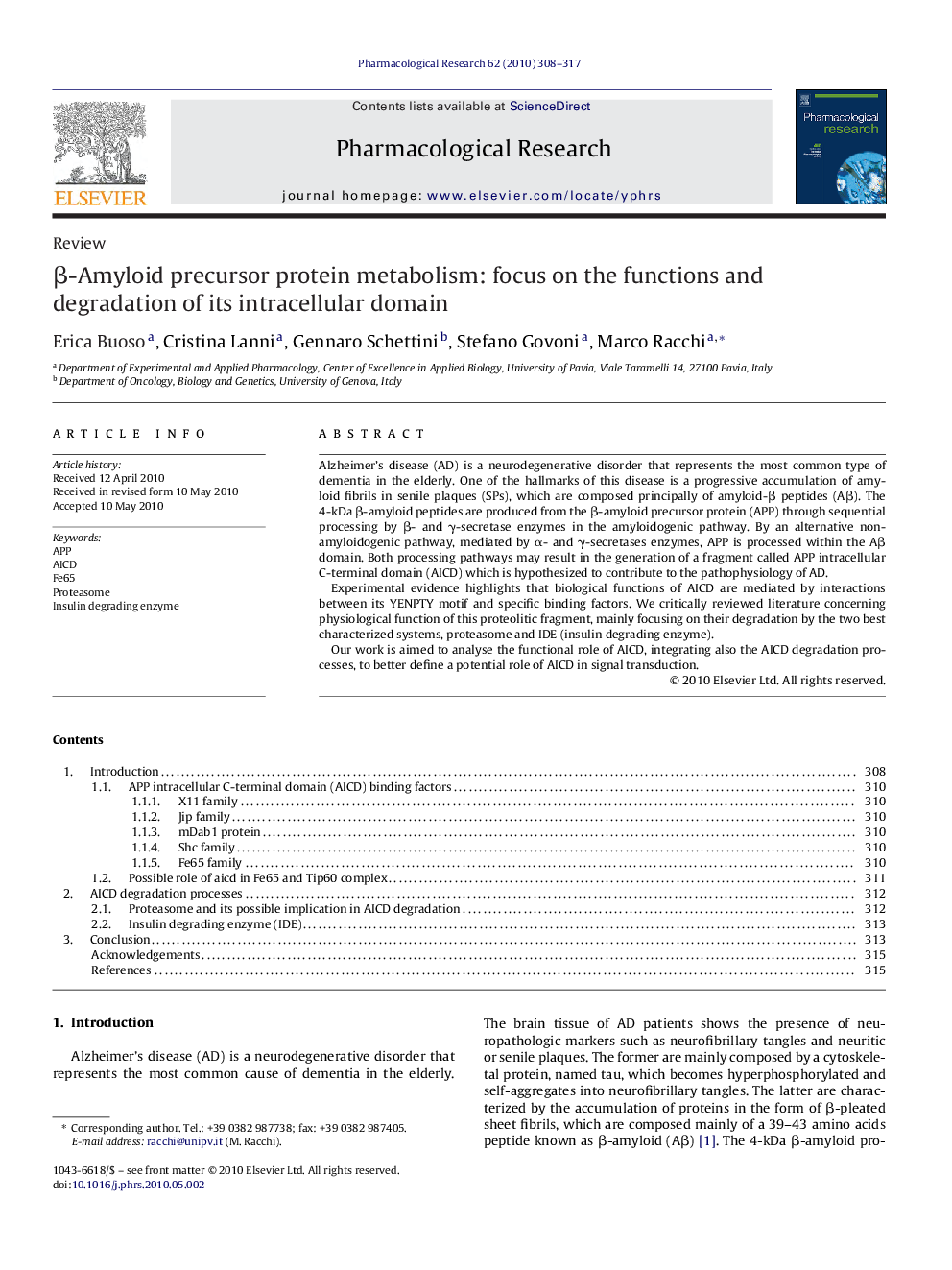| Article ID | Journal | Published Year | Pages | File Type |
|---|---|---|---|---|
| 2561363 | Pharmacological Research | 2010 | 10 Pages |
Alzheimer's disease (AD) is a neurodegenerative disorder that represents the most common type of dementia in the elderly. One of the hallmarks of this disease is a progressive accumulation of amyloid fibrils in senile plaques (SPs), which are composed principally of amyloid-β peptides (Aβ). The 4-kDa β-amyloid peptides are produced from the β-amyloid precursor protein (APP) through sequential processing by β- and γ-secretase enzymes in the amyloidogenic pathway. By an alternative non-amyloidogenic pathway, mediated by α- and γ-secretases enzymes, APP is processed within the Aβ domain. Both processing pathways may result in the generation of a fragment called APP intracellular C-terminal domain (AICD) which is hypothesized to contribute to the pathophysiology of AD.Experimental evidence highlights that biological functions of AICD are mediated by interactions between its YENPTY motif and specific binding factors. We critically reviewed literature concerning physiological function of this proteolitic fragment, mainly focusing on their degradation by the two best characterized systems, proteasome and IDE (insulin degrading enzyme).Our work is aimed to analyse the functional role of AICD, integrating also the AICD degradation processes, to better define a potential role of AICD in signal transduction.
Graphical abstractFigure optionsDownload full-size imageDownload as PowerPoint slide
